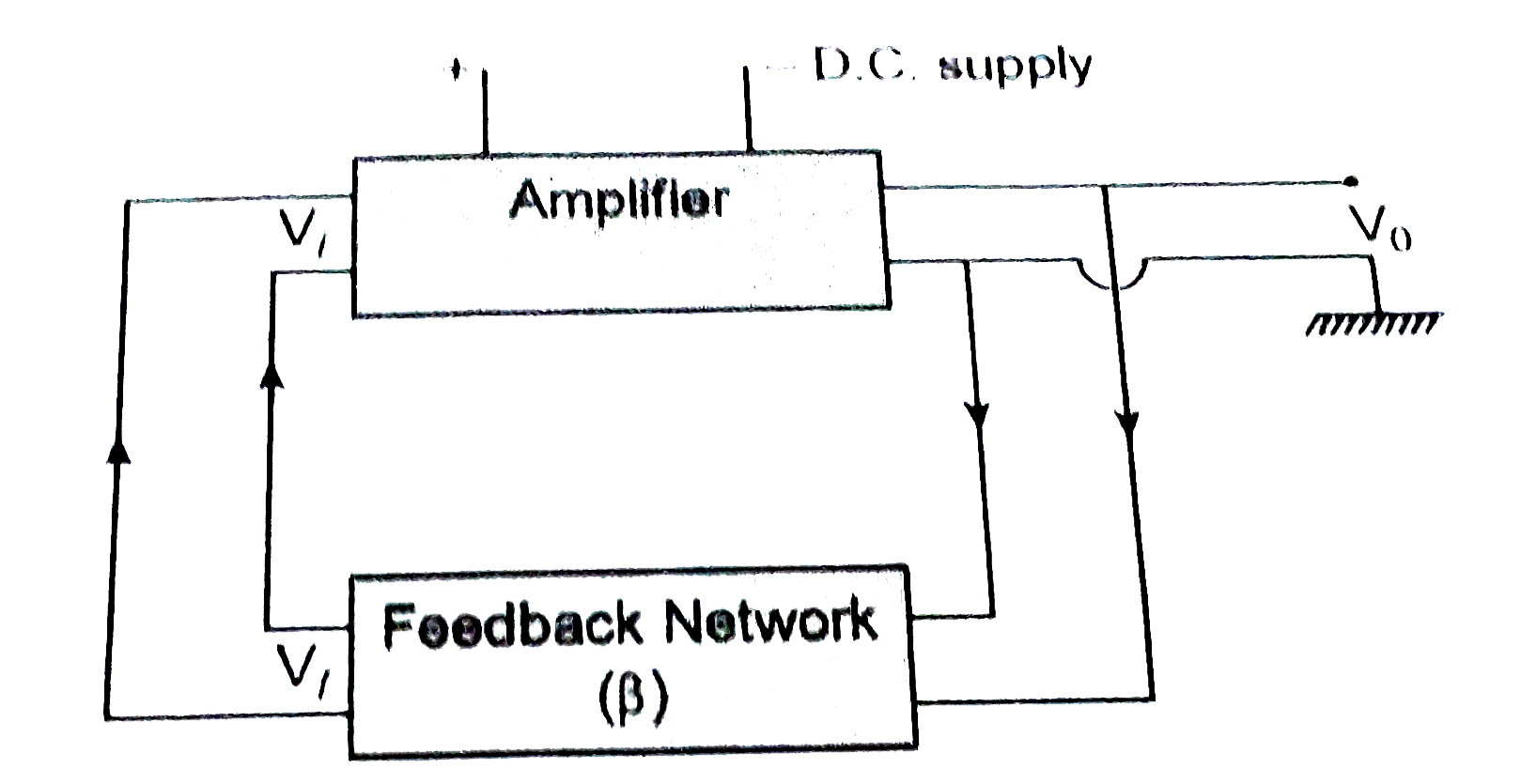Explain the elementary idea of an oscillator with the help of block diagram .
Text Solution
Oscillator : An oscillator is an electronic device which generates an AC signal from a DC source. Oscillators are used in radio /TV receiver set, radio/TV transmitters, RADAR, smartphones and microwaves ovens. No inout is applied to the oscillator,yet an output is obtained from it.
An oscillator requires an amplifier and a feeback network with frequency determining components. when a part of the output of an amplifier is coupled to the input of the amplifier, it is called feedback. When the feedback sample is out of phase with the input, it is called negative feedback. When the feedback sample is in phase with the input, it is called positive feedback. For an oscillator , a positive feedback is required. The block diagram of oscillator is shown below :

The voltage gain of a complete system is given by
Af=A1−Aβ
Where Af is the voltage gain with feedback, A is voltage gain without feedback and β is the feedback factor.
If for some frequency Aβ=1, then the system gain becomes ∞ and the circuit begins to oscillate at that frequency. This condition(Aβ=1) is called the Barkhausen criterion for sustained oscillations.
The frequency of oscillations depends on the LC or RC combinations used in a feedback network. When the power supply connected to the oscillator is turned ON, electrical noise of a wide range of a frequencies is generated in the circuit, but the condition Aβ=1 is satisfied only for a particular frequency and the oscillator at that frequency .
|
Topper's Solved these Questions
- FEBRUARY 2016Book:GURUKUL PUBLICATION - MAHARASHTRA PREVIOUS YEAR PAPERSChapter: FEBRUARY 2016Exercise:SECTION-II
Explore 21 Videos
- FEBRUARY 2014Book:GURUKUL PUBLICATION - MAHARASHTRA PREVIOUS YEAR PAPERSChapter: FEBRUARY 2014Exercise:SECTION-II
Explore 21 Videos
- FEBRUARY 2018Book:GURUKUL PUBLICATION - MAHARASHTRA PREVIOUS YEAR PAPERSChapter: FEBRUARY 2018Exercise:SECTION-II
Explore 21 Videos
Similar Questions
Explain the elementary idea of an oscillator with the help of a block diagram.
View SolutionExplain meiosis with the help of labelled diagrams.
View SolutionExplain the structure of middle ear and internal ear with the helpof diagrams.
View SolutionExplain biofuel production with the help of a diagram
View SolutionExplain the meaning of deflationary gap with the help of a diagram.
View SolutionExplain the replication of bacteriophage with the help of suitable diagram.
View SolutionWhat is transcription. Explain it with the help of a diagram.
View SolutionExplain the process of reproduction in Plasmodium with the help of a diagram.
View SolutionBlock diagram of oscillator consists of
View SolutionExplain anisotropy in solids with the help of a diagram.
View Solution
